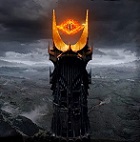morvael
Posts: 11762
Joined: 9/8/2006
From: Poland
Status: offline

|
There was a cavalry regiment set to be a subunit of itself (thus assumed to operate with 1/3 strength of a full regiment), but that doesn't work fully for units other than divisions, hence new TOE.
There is a problem with naming, most Soviet names are "inflated" when compared to what they really represent, while some German are "deflated". On one hand you have the German 41 Elite Motorized Regiment with 6772 men and CV of 7, then you have the German 41 Motorized Brigade with 5677 men and CV of 4.5, and finally on the other side of the scales you have the 42a Tank Corps with 5596 men and CV of 3.2. So why does the regiment has reduced ZOC and increased movement costs, while the Tank "Corps" has full ZOC and normal movement costs? I would love to tie ZOC and movement costs to unit combat power, but that would change the balance too much, as most Soviet ants would be penalized even more, having a CV of just 1 or 2 (or there would be little to no units with penalties).
I always try to alter those rules, where nominal unit size counts, not actual manpower and/or actual combat power. We added missing Panzer Regiment to Demyansk scenario, which was just that - the armored part of a Panzer Division, and this unit of 140+ tanks had a CV of 7. Just because it's called a regiment, should it be made a support unit? A combat unit? And if it should be a combat unit should it's ZOC be weaker than ZOC of a CV 1 rifle division?
StuG "brigades" have about 44-45 AFV and 800-1000 men (CV 1.86-2.02). On average Panzer Battalions have 44-48 AFV and 700-900 men (CV 2.59-3.81). 43a Panzer Battalion has 1764 men and 96 AFV (CV 5.22)! So you want the weakest of those units to be able to become on-map units just on the grounds of having the most pompous name. Let's look at some of their Soviet counterparts: 42a Tank Brigade: 949 men, 50 AFV, CV 1.21; 43a Tank Brigade: 1129 men, 53 AFV, CV 1.59; 44 Light SU Brigade: 1119 men, 63 AFV, CV 2.27.
As you can see units in this range are on-map units for the Soviets, but SUs for the Germans. I guess this won't be much of a problem as you think, because a) for attack you want to put as much strength in the hex as possible, and for that SUs attached to front-line CUs are better; b) units smaller than a division can be routed or shattered more easily, so you don't want to keep them lone in the hex. So IMHO what the multirole units would allow is just a bit more of flexibility and scenario designer friendliness. Also, they will be of use to the players as flexible, mobile, beefs for their frontlines where sometimes you can't put 3 divisions per hex, but want to strengthen one position. Doing this using the SU way is less player friendly, because SUs are invisible when in the HQ (all HQs show a CV of 0, while they can have 0-20 CV worth of assets). The strongest of these assets should be available to be put on the map directly.
By the way - just as I said, once some changes will be revealed, a heated discussion will start and I will spend a lot of time on that alone 
edit: by the way my initial list of proposed multi-role units was longer, but Denniss selected only those you see. I also wanted to put on that list units that were known to operate independently (commandos, recon), and those units that despite low CV (because of low national morale) have a lot of men (for example 41 Ital. CCNN Legion with 1506 men). Denniss reduced that list only to those units which have high CV.
edit2: Truth be told, due to low stacking limits it would be wise to make those smaller Soviet units multirole as well, but:
a) Soviets are already masters of concentration per hex with their corps combat units, which the Germans can't do. Being able to attach brigades to those corps would be way too much.
b) Soviets have no problems with low counter density, they can usually manage to setup more than one line of defense, hence they don't need extra counters.
< Message edited by morvael -- 9/28/2015 3:27:16 PM >
|
 Printable Version
Printable Version
















 New Messages
New Messages No New Messages
No New Messages Hot Topic w/ New Messages
Hot Topic w/ New Messages Hot Topic w/o New Messages
Hot Topic w/o New Messages Locked w/ New Messages
Locked w/ New Messages Locked w/o New Messages
Locked w/o New Messages Post New Thread
Post New Thread